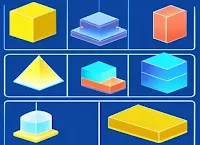Volume calculators have long been an indispensable tool in various fields, from mathematics and engineering to everyday practical applications. These tools serve the critical function of determining the space occupied by a three-dimensional object. The ability to swiftly and accurately calculate volume not only streamlines complex computations but also aids in design, construction, manufacturing, and numerous other sectors where precise measurements are paramount.
The Birth of Digital Volume Calculators
Early Developments
The evolution of volume calculators parallels the advancement of technology. Initially, volume calculations were performed manually, utilizing intricate mathematical formulas and equations. However, with the advent of computers and digital technologies, the landscape changed drastically. Early software programs started integrating volume calculators, offering users the convenience of swift and error-free computations.
The Contemporary Landscape
Web-Based Volume Calculators
In today's digital age, volume calculators are easily accessible via web-based platforms. These tools come in various forms, ranging from simple web applications to sophisticated software integrated into specialized domains. A plethora of websites offers users the ability to calculate the volume of diverse shapes, including spheres, cubes, cylinders, cones, pyramids, and more.
Functionality and Usability
Modern volume calculators boast intuitive user interfaces, allowing individuals with varying levels of expertise to effortlessly input measurements and obtain accurate volume calculations. The inclusion of interactive elements, dynamic input fields, and real-time feedback significantly enhances user experience.
Breaking Down the Mechanics
Understanding the Formulas
Each geometric shape has its unique formula for calculating volume:
- Sphere: \( V = \frac{4}{3} \pi r^3 \)
- Cube: \( V = s^3 \)
- Cylinder: \( V = \pi r^2 h \)
- Cone: \( V = \frac{1}{3} \pi r^2 h \)
- Rectangular Prism: \( V = l \times w \times h \)
- Triangular Prism: \( V = \frac{1}{2} b \times h \times H \)
- Pyramid: \( V = \frac{1}{3} \text{base area} \times \text{height of the pyramid} \)
- Ellipsoid: \( V = \frac{4}{3} \pi a \times b \times c \)
Each formula encapsulates the essence of the shape's geometry, allowing for precise determination of volume based on specific measurements.
The Practical Implications
Diverse Applications
The applications of volume calculators are far-reaching. Architects and engineers utilize these tools in design and construction to accurately estimate material requirements and space utilization. Manufacturers rely on volume calculations for optimizing production and packaging. Even in educational settings, volume calculators serve as invaluable aids in teaching geometry and mathematics.
The Future of Volume Calculators
Advancements and Innovations
As technology continues to advance, the capabilities of volume calculators will likely expand further. Integration with augmented reality (AR) or virtual reality (VR) technologies could revolutionize how individuals visualize and interact with three-dimensional shapes, enabling more immersive and practical applications.
Enhanced Precision and Accessibility
Future iterations of volume calculators may focus on enhancing precision through advanced algorithms and artificial intelligence. Moreover, efforts to make these tools more accessible across devices and platforms will likely continue, ensuring widespread availability for professionals and enthusiasts alike.
Conclusion
The evolution of volume calculators has significantly transformed how we approach three-dimensional measurements. From manual calculations to sophisticated digital tools, these calculators have become indispensable in numerous fields. As technology progresses, these tools will undoubtedly continue to evolve, offering enhanced precision, usability, and accessibility for a multitude of applications.



